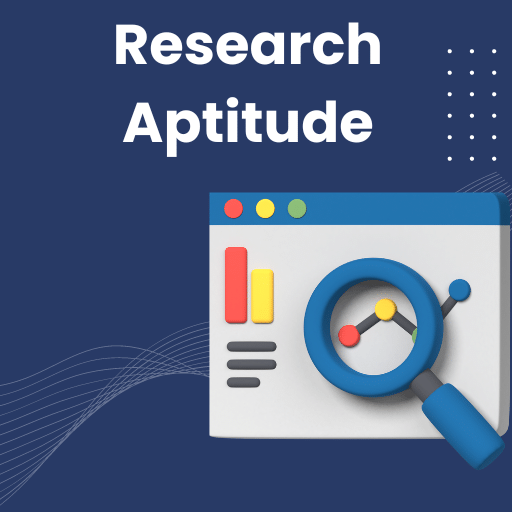Data Collection: Types | UGC NET Commerce Preparation Course PDF Download
| Table of contents |

|
| What is Data Collection? |

|
| Data Collection Types |

|
| The Importance of Data Collection |

|
| 7 Data Collection Methods Used in Business Analytics |

|
| Building Your Data Capabilities |

|
What is Data Collection?

Data collection is the systematic process of gathering information about a specific topic. It is essential to ensure that data is collected completely, legally, and ethically to guarantee the accuracy of any subsequent analysis, as inaccurate data collection can have significant consequences.
Data Collection Types
In general, there are three main types of consumer data:
- First-party data: This data is collected directly from users by your organization.
- Second-party data: Data shared by another organization about its customers or its own first-party data.
- Third-party data: Data that has been aggregated, rented, or sold by organizations without a direct connection to your company or users.
While there are use cases for second- and third-party data, first-party data is considered more valuable because it provides insights into how your audience behaves, thinks, and feels, coming from a trusted source.
Data can be qualitative (descriptive) or quantitative (numeric). Various methods of data collection can be applied to either type, although some methods may be more suitable for one type over the other.
In the data life cycle, data collection is the second crucial step following data generation. Data collection is essential to make data usable for your team. Subsequently, the collected data undergoes processing, storage, management, analysis, and visualization, all of which are pivotal in facilitating your organization's decision-making processes.

Factors to Define Before Data Collection
Before embarking on the data collection process, it is imperative to define several key factors:
- The question you aim to answer
- The data subject(s) you need to collect data from
- The collection timeframe
- The data collection method(s) best suited to your needs
The choice of data collection method should be guided by the question you seek to address, the type of data required, your timeline, and your organization's budget.
The Importance of Data Collection

Collecting data is crucial for the success of any business. It helps ensure that the data is accurate, complete, and relevant to your organization and the specific issue at hand. Analyzing this information allows organizations to review past strategies and stay updated on necessary changes.
The insights gained from data can greatly increase awareness of your organization's efforts and provide actionable steps to enhance various strategies, such as adjusting marketing tactics or addressing customer concerns.
Making decisions based on incorrect data can lead to significant negative consequences. Therefore, it is essential to have confidence in your data collection processes and capabilities. Reliable data collection enables business professionals to make informed and secure decisions.
Discover the various data collection methods in the following section to determine the most suitable approach for your company.
 |
Download the notes
Data Collection: Types
|
Download as PDF |
7 Data Collection Methods Used in Business Analytics
1. Surveys:
Surveys involve the use of physical or digital questionnaires to gather both qualitative and quantitative data from individuals. One common scenario for conducting a survey is to collect feedback from attendees following an event. This feedback can offer insights into attendee preferences, areas for improvement, and potential cost-saving measures for future events targeting a similar audience.
Online surveys, in particular, offer the advantage of scalability and cost-effectiveness. They can be distributed widely and inexpensively, with some tools even available for free. To target a specific demographic, collaborating with a market research firm to reach the desired audience can be a worthwhile investment.
When designing and administering surveys, it is crucial to be mindful of biases that can affect the quality of data collected, including:
- Collection Bias: Care must be taken to avoid crafting survey questions that exhibit bias, as this can influence how respondents answer. Ensuring neutral wording is essential to encourage honest responses.
- Subject Bias: Respondents may alter their answers based on what they believe is socially acceptable or what they think the surveyor wants to hear. To mitigate this bias, integrating survey data with behavioral insights from other data collection methods can provide a more comprehensive understanding.
This response provides a paraphrased and detailed explanation of the data collection method of surveys as presented in the provided content.
2. Transactional Tracking:
- Tracking customer purchases to inform targeted marketing strategies and understand the customer base better.
- E-commerce and point-of-sale platforms automatically store data for seamless collection, aiding in gaining valuable customer insights.
3. Interviews and Focus Groups:
- Engaging in face-to-face discussions with individuals or groups to collect qualitative and quantitative data.
- Gathering feedback on new product features by observing interactions and recording reactions of participants.
- These methods enable asking about opinions, motivations, and feelings towards products or brands, but may introduce bias.
- Interviews and focus groups can be time-consuming and costly; hiring a market research facilitator can streamline the process.
4. Observation:
- Observing how people interact with your website or product provides valuable insights due to their natural behavior. If users find your experience confusing or challenging, you can see it unfold in real time.
- Setting up observation sessions can be complex, but you can use third-party tools to record user journeys or watch how users engage with a beta version of your site or product.
- Although it may be less accessible than other data collection methods, observation allows you to directly see user interactions, giving you both qualitative and quantitative data to refine your product and enhance successful elements.
5. Online Tracking:
- To collect behavioral data, you can use pixels and cookies. These tools track users' online activities across various websites, revealing their interests and engagement patterns.
- On your company’s website, you can track user behavior to identify the most engaging areas, detect confusion points, and see how long users spend on product pages. This information helps enhance your website’s design and improve navigation.
- Setting up a pixel is typically free and straightforward, while implementing cookies may incur a fee but can provide valuable data. Once established, pixels and cookies automatically collect data with minimal maintenance required.
- Be aware that tracking online behavior comes with legal and ethical privacy considerations. Ensure compliance with local and industry data privacy regulations before implementing these tracking methods.
6. Forms:
- Online forms are useful for gathering qualitative data, such as demographic information or contact details. They are cost-effective and easy to set up, and can be used to gate access to content or registrations, like webinars and email newsletters.
- The data collected can help you reach out to potential customers, build demographic profiles, and enhance remarketing efforts, including email campaigns and content recommendations.
7. Social Media Monitoring:
- Monitoring your company’s social media channels provides valuable insights into your audience’s interests and motivations. While many social media platforms offer built-in analytics, third-party tools can offer more detailed and organized insights across multiple channels.
- By analyzing social media data, you can identify key issues that resonate with your followers. For example, you might find increased engagement when posting about your company’s sustainability initiatives.
Building Your Data Capabilities
Knowing the different data collection methods available helps you choose the best approach for your goals, budget, and timeline. Combining various data types from different methods can offer a comprehensive view of your audience and support more informed business decisions.
|
235 docs|166 tests
|
FAQs on Data Collection: Types - UGC NET Commerce Preparation Course
| 1. What is the importance of data collection in the data life cycle? |  |
| 2. What are the different types of data collection methods used in research? |  |
| 3. How can businesses effectively gather customer data for sustainable practices? |  |
| 4. How can businesses ensure the data collected is used ethically and responsibly? |  |
| 5. How can businesses leverage data collection to improve their sustainability efforts? |  |
































